5 Best USB C to Lightning Cables for Fast Charging
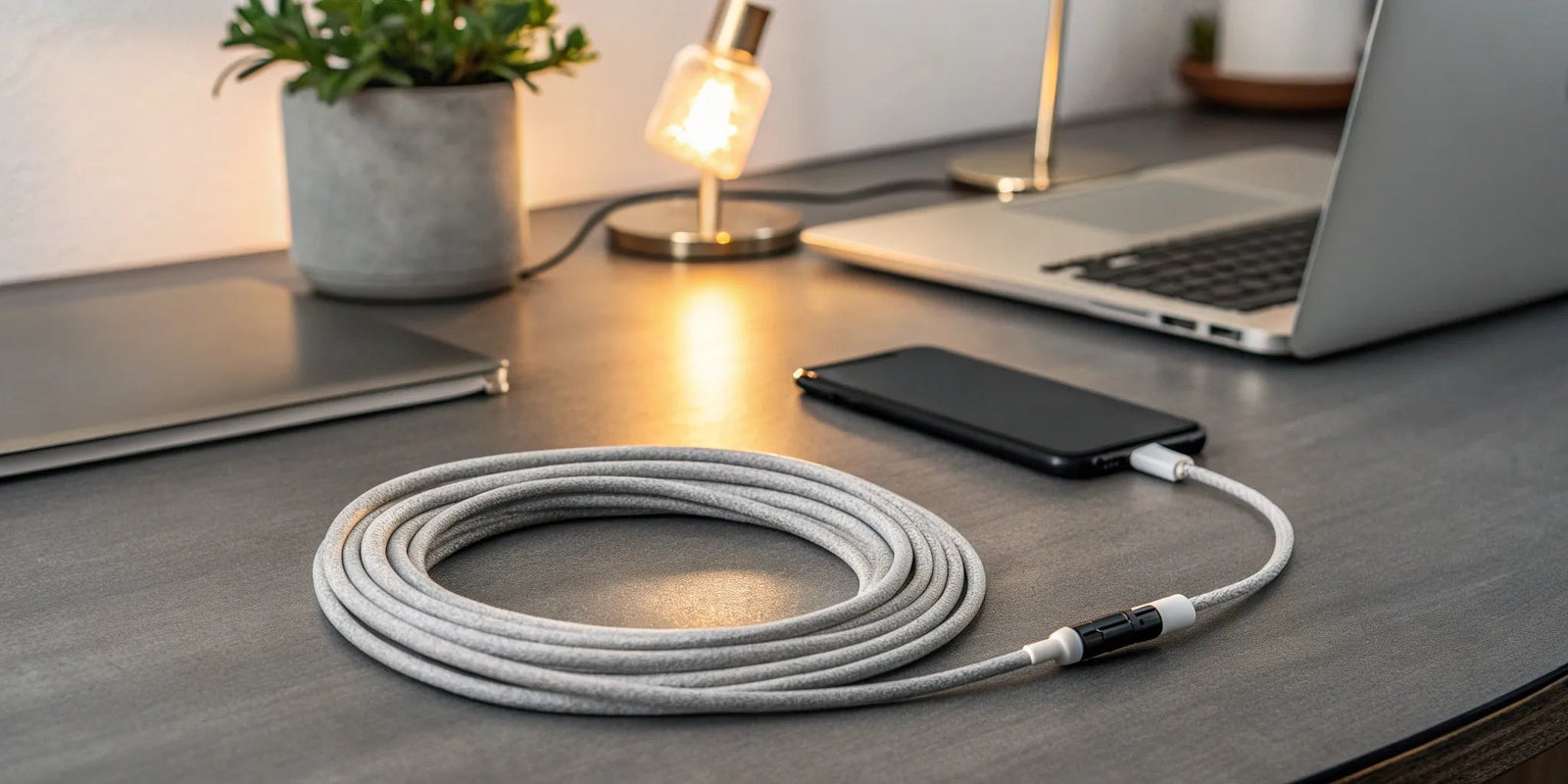
Your iPhone is the command center for your life, whether you’re navigating a new trail, coordinating with your family, or closing a deal on the road. The last thing you need is to be held back by a dead battery. While you can’t always predict when you’ll need a quick power-up, you can be prepared with the right tools. A high-quality USB-C to Lightning cable fast charging setup is essential for anyone who values readiness and efficiency. It delivers a massive power boost in a short amount of time, keeping you connected and in control. This guide will show you how to choose the most durable and reliable cables that can keep up with your demanding lifestyle.

Portable Solar Power Bank 26800mAh - 99Wh Fast Charger
Lithium Polymer (Li-Po) battery. PD fast charging. Holds up to 8 days of reliable power on a single charge. Boasts a charging speed 50% faster than ordinary portable chargers.
Shop NowKey Takeaways
- Get True Fast Charging with the Right Trio: To get that 0-to-50% charge in 30 minutes, you need three things working together: a compatible device (iPhone 8 or newer), a USB-C power adapter of at least 20W, and a quality USB-C to Lightning cable.
- Look for MFi Certification and a Durable Build: For safety and reliable performance, always choose a cable with Apple's MFi certification. To make sure it lasts, look for features like a braided exterior and reinforced connectors that stand up to daily wear and tear.
- Choose Value Over a Low Price Tag: A cheap, uncertified cable is a false economy that can damage your iPhone and needs frequent replacement. Investing a bit more in a high-quality, certified cable from a trusted brand protects your device and saves you money in the long run.
What is USB-C to Lightning Fast Charging?
Let's be honest: waiting for your iPhone to charge is frustrating, especially when you're in a hurry. That's where USB-C to Lightning fast charging comes in. It’s a total game-changer, capable of getting your iPhone battery from zero to 50% in about 30 minutes. For anyone with a busy schedule, that kind of speed isn't just a nice-to-have; it's essential.
The magic happens when you combine two key pieces of gear: a quality USB-C to Lightning cable and a power adapter that can deliver at least 20 watts (W). The standard USB-A charger that used to be the norm just can't move power that fast. When you pair the right cable with a powerful fast wall charger, you're creating a superhighway for electricity to reach your device, which means less time tethered to an outlet.
How Power Delivery (PD) Works
The technology that makes this speed possible is called Power Delivery (PD). It’s essentially a smart communication system between your charger and your device. Instead of just pushing a standard, slow stream of power, a PD charger "talks" to your iPhone to figure out the fastest charging speed it can safely accept. This intelligent charging protocol can deliver much more power than older standards, which is why the same USB-C PD charger can power up your phone, tablet, and even some laptops. It’s this smart negotiation that makes fast charging both efficient and safe for your battery.
Why It's Faster Than Standard Cables
So why is a USB-C cable so much quicker than the old USB-A ones? It all comes down to its capacity to handle more power. Think of it like filling a pool: a standard USB-A cable is like a garden hose, delivering a slow, steady trickle. A USB-C cable, on the other hand, is like a fire hose, capable of delivering a massive amount of power all at once. This ability to handle a higher power rate means your battery fills up in a fraction of the time. It’s simply a more powerful and efficient design made for the demands of today's devices.
Debunking Common Fast-Charging Myths
A common mistake is thinking you can just grab a cheap adapter to make your old cables work with a new fast charger. I see this all the time, but it's a myth that can leave you with slow charging speeds. Many low-cost, uncertified Lightning-to-USB-C adapters don't actually support the Power Delivery protocol, which means you'll be stuck charging at a crawl. Even worse, they can be unreliable and potentially damage your iPhone. To get the speed and safety you expect, your best bet is always to use a dedicated, high-quality USB-C to Lightning cable from a brand you trust.
What to Look For in a Fast-Charging Cable
Not all charging cables are created equal, and picking the right one goes beyond just finding the correct connector. When you’re looking for a cable that can safely and quickly power up your iPhone, a few key details make all the difference. Paying attention to certification, power rating, build quality, and even length will ensure you get a cable that performs well and lasts for the long haul. Think of it as an investment in your device's health and your own peace of mind. A great cable works so well you forget it’s even there, while a bad one is a constant source of frustration. Let’s walk through exactly what to look for so you can make a smart choice.
Why MFi Certification Matters
If you have an iPhone or iPad, the most important thing to look for is MFi certification. MFi stands for "Made for iPhone/iPad," and it's Apple's official seal of approval. This certification means the cable has been tested to meet Apple's strict performance and safety standards. Using a non-certified cable is a gamble—it might not charge your device properly, could damage the charging port, or even stop working after an iOS update. To protect your expensive devices, always choose a cable that is MFi certified. It’s the simplest way to identify accessories that are guaranteed to work safely and reliably with your Apple gear.
Match the Power Rating to Your Device
To unlock true fast charging, your cable needs to be paired with the right power source. For a modern iPhone, that means using a USB-C to Lightning cable with a powerful wall adapter, typically one rated at 20W or higher. This combination is what allows you to get that incredible speed, like charging your battery to 50% in about 30 minutes. A fast-charging cable is only half of the equation; without one of the right fast wall chargers, it won't deliver power any quicker than a standard setup. Always check that both your cable and your charger support Power Delivery (PD) to get the performance you expect.
Check for Durability and Build Quality
We’ve all dealt with frayed cables and broken connectors. Durability is a huge factor in a cable's value and reliability. Look for cables made with robust materials that can stand up to daily use. Models with a braided nylon exterior, like the KEUTEK ProSeries Max, are far more resistant to bending, twisting, and general wear and tear than standard plastic-coated cables. Reinforced connector joints are also a key feature, as this is the most common point of failure. Investing in a well-built cable means you won’t have to replace it every few months, saving you money and frustration in the long run.
Choose the Right Cable Length
Cable length is more than just a matter of convenience; it’s about how you use your devices. A shorter cable might be perfect for charging on your desk or in the car, keeping things tidy and tangle-free. A longer cable, on the other hand, gives you the freedom to use your phone while it’s charging from an outlet across the room. A common misconception is that longer cables are slower, but a high-quality 5- or 6-foot cable can easily support 20W Power Delivery for fast charging. Consider where you charge your devices most often and choose a length that fits your lifestyle without compromising on speed.
The Best Fast-Charging Cables for Your iPhone
With so many cables on the market, finding the right one can feel overwhelming. You need a cable that’s fast, durable, and, most importantly, safe for your expensive devices. We’ve sorted through the options to highlight the best USB-C to Lightning cables that deliver on their promises. Whether you’re looking for top-of-the-line performance, a reliable alternative, or a budget-friendly option that doesn’t cut corners on safety, we have a recommendation for you. The key is to find a cable that matches your device’s needs and your lifestyle. For instance, a frequent traveler might prioritize a rugged, braided cable, while someone outfitting a home office might want a multi-pack. This guide will help you understand the landscape and make a confident choice, so you can get back to being fully charged and ready for anything.
Why We Recommend the KEUTEK ProSeries Max
When it comes to a perfect blend of speed, durability, and thoughtful design, the KEUTEK ProSeries Max is our top pick. These cables are built to withstand the demands of daily life, whether you're charging at your desk or tossing them in a bag for your next adventure. The double-braided nylon exterior prevents fraying and tangling, while the reinforced connectors resist bending and breaking. More importantly, the ProSeries Max is engineered for performance, supporting high-wattage Power Delivery to get your iPhone or iPad charged up in the shortest time possible. It’s an MFi-certified cable you can trust to work flawlessly and safely with all your Apple devices, giving you peace of mind alongside a powerful charge.
Other Premium Options to Consider
While we stand by our ProSeries Max, it’s always good to know the other top players. Anker is a well-respected brand in the charging space, and their cables consistently receive high marks. According to a review from Tech Gear Lab, the Anker Powerline II USB-C is a favorite for its "durable cable, and the fastest charging times of all the tested products." Like KEUTEK, Anker focuses on creating high-quality cables that are MFi-certified and built to last. If you're exploring premium options, Anker provides another reliable choice that won't let you down when you need a quick and efficient charge for your Apple devices.
Solid Budget-Friendly Cables
You don't have to spend a fortune to get a safe and effective fast-charging cable. If you're looking for a more economical option, especially if you need multiple cables for your car, office, and home, there are great choices available. Brands like Exeric offer MFi-certified fast charging cables in convenient multi-packs. The most important feature to look for in this category is that "MFi-Certified" badge. This certification is your assurance that the cable meets Apple's standards for safety and performance. A budget-friendly cable should still be a safe cable, so never compromise on this crucial feature.
The Real Cost of Cheap, Uncertified Cables
It can be tempting to grab that super cheap, no-name cable from the checkout line, but the hidden costs can be significant. Uncertified cables often use low-quality components that can’t handle the power required for fast charging. This can lead to slow charging speeds, error messages on your device, or—in the worst-case scenario—overheating that can permanently damage your iPhone's battery or charging port. To ensure true fast-charging capability, you must use an MFi-certified cable with a compatible power adapter. Investing a few extra dollars in a certified cable is a small price to pay to protect your devices and ensure they charge safely and efficiently every time.
Will It Work With Your Device?
Getting the fastest possible charge isn't just about plugging in a new cable. It’s about creating a complete system where your device, your cable, and your power adapter all work together seamlessly. If one piece of the puzzle is missing, you won’t get the speed you’re looking for. Think of it like a team—every player needs to be up to the task. A powerful cable can't do its job if it's connected to a weak power brick, and even the best setup won't fast-charge a device that wasn't designed for it. This synergy is what makes modern charging technology so effective, but it requires a little know-how to get it right.
The good news is that figuring out compatibility is pretty straightforward. Most modern Apple devices are ready for fast charging, but you need to make sure you’re pairing them with the right accessories. A high-quality USB-C to Lightning cable is the critical link that allows for higher power transfer, but the power source it’s connected to is just as important. Let’s walk through exactly what you need to check to ensure your setup is ready to deliver a safe, rapid charge every time you plug in, so you can get back to your day without being tethered to an outlet. We'll cover your device model, the power adapter, and how to keep things running coolly and efficiently.
Check Your iPhone and iPad Model
First things first, let's talk about your device. The ability to fast charge is built into iPhones starting with the iPhone 8 and newer models, as well as many recent iPad models. If you have one of these devices, you're all set to take advantage of faster speeds. With the right setup, you can get up to 50% battery in around 30 minutes.
What if you have an older device, like an iPhone 7? You can still use a USB-C to Lightning cable to charge it, but it will charge at a standard speed. You won't get that 50% boost in half an hour, but a quality cable will still provide a safe and reliable charge. So, while the fast-charging feature is specific to newer models, the cable itself is backward-compatible for standard charging on older Lightning devices.
Find the Right Power Adapter
Your charging cable is only as fast as the power source it's plugged into. To unlock fast charging, you need to pair your USB-C to Lightning cable with a USB-C power adapter that has enough wattage. For iPhones, you’ll want a wall charger that delivers at least 20 watts (20W) of power. Using an 18W, 20W, or higher-wattage adapter is what enables the Power Delivery (PD) protocol to work its magic.
If you use a less powerful adapter, like the old 5W cube that used to come with iPhones, your device will charge very slowly, no matter how great your cable is. To get the performance you expect, make sure you have a compatible power brick, like one of KEUTEK’s fast wall chargers, that can supply the necessary power.
How to Charge Safely and Avoid Overheating
It's completely normal for your phone and charger to get a little warm during a fast-charging session. This happens because more energy is being transferred in a shorter amount of time. However, they should never become uncomfortably hot to the touch. Excessive heat can degrade your battery’s health over time, which is something we all want to avoid.
The best way to ensure a safe charge is to use MFi-certified cables and high-quality power adapters from trusted brands. These products are built with safety mechanisms that regulate temperature and prevent overcharging. Your iPhone also has its own internal safeguards that manage the charging speed to protect the battery. By sticking with certified gear, you’re letting the whole system work as designed to keep your device safe.
Create the Best Conditions for a Fast Charge
To get the absolute quickest charge, you can do a few simple things. First, avoid using your phone for intensive tasks like gaming or streaming video while it’s plugged in. These activities generate heat and use up power, which can slow down the charging process.
Also, try to keep your phone in a cool environment. Leaving it to charge on a sunny dashboard or under a blanket can trap heat and cause the internal software to slow the charging speed to protect the battery. For an extra edge, you can switch on Low Power Mode. The most important step, however, is using the right hardware: a powerful 20W+ adapter and a durable, MFi-certified cable like the KEUTEK ProSeries Max.
How to Choose the Right Cable
Picking a new charging cable can feel like a minor decision, but it has a major impact on your device's health and your daily routine. We’ve all grabbed a cheap cable from a checkout line in a pinch, only to have it fray or stop working a few weeks later. A great cable, on the other hand, charges your devices quickly, safely, and reliably for years. Making a smart choice from the start saves you money and the frustration of a dead phone when you need it most. So, what separates a quality cable from one that’s destined for the landfill? It comes down to a few key factors: safety certifications, durable materials, and smart design. By paying attention to these details, you can find a cable that not only works but lasts.
Prioritize These Safety Features
When you’re connecting a cable to your expensive smartphone, safety should be your top priority. For iPhone users, this means looking for MFi (Made for iPhone/iPad/iPod) certification. This is Apple's official stamp of approval, ensuring the cable meets their strict standards for safety and performance. Using a non-certified cable can lead to issues like slow charging, error messages, or even damage to your device's charging port. To get the full benefit of fast charging, you also need to pair your certified cable with a compatible fast wall charger that supports Power Delivery (PD). This combination ensures your devices charge at their maximum speed without risking overheating or electrical problems.
Make Your Cable Last Longer
The lifespan of your cable often comes down to its construction. Standard plastic-coated cables are prone to fraying and breaking, especially at the connector head, where the cable bends the most. To avoid this, look for cables built with more robust materials. Braided nylon exteriors offer excellent protection against daily wear and tear, preventing kinks and splits. The KEUTEK ProSeries Max cables, for example, feature a durable braided design and reinforced connector joints to withstand repeated plugging and unplugging. Investing in a well-built cable means you won't have to replace it every few months, making it a more sustainable and reliable choice.
When to Replace Your Cable
Even the best cables don't last forever. It's important to know the warning signs of a failing cable to prevent potential damage to your devices. The most obvious sign is visible wear and tear, like a split outer jacket, exposed wires, or a bent connector. You should also pay attention to its performance. If your cable only works when held at a specific angle, or if your device frequently connects and disconnects while plugged in, it’s time for a replacement. Using a damaged cable can lead to inconsistent charging, short-circuiting, or even harm your device’s battery over time. Don't wait for it to fail completely—replace it as soon as you notice these issues.
How to Judge Price vs. Value
It’s easy to be tempted by a super cheap cable, but they rarely offer good value. These low-cost options are often made with flimsy materials and lack the safety certifications needed to protect your devices. While you might save a few dollars upfront, you'll likely end up buying multiple cheap cables after they inevitably break or stop working. A better approach is to invest a little more in a high-quality cable from a reputable brand. A durable, certified cable will last significantly longer and provide a safer, more reliable charge. Think of it as a one-time investment in your tech's longevity versus a recurring expense for a product that just doesn't last.
How to Shop for Your Next Cable
Shopping for a new charging cable might seem simple, but making a smart choice can save you from frustration, slow charging speeds, and even potential damage to your devices. A great cable is an investment in keeping your essential tech powered up and ready to go. Instead of just grabbing the cheapest option on the shelf, a little bit of know-how will help you find a reliable cable that performs well and lasts for years. Think about it as choosing the right tool for the job—because when you need a charge, you need it to work without a second thought. This guide will walk you through exactly what to look for, so you can buy your next cable with confidence.
Where to Buy Authentic Cables
The best way to guarantee you’re getting a genuine, high-quality product is to buy directly from a reputable brand’s website or from an authorized retailer. When you purchase from the source, like getting a ProSeries USB-C cable from our official store, you eliminate the risk of ending up with a counterfeit. Third-party marketplaces can be a minefield of fakes and low-quality knockoffs that don't meet safety or performance standards. Sticking to trusted sources ensures the cable you receive has been properly tested, is MFi-certified (if it’s a Lightning cable), and will work exactly as advertised with your devices.
Always Check the Warranty
A warranty is more than just a piece of paper; it’s a direct reflection of a company's confidence in its product. If a brand offers a limited or non-existent warranty, it might be a red flag about the cable's long-term durability. Look for cables that come with a solid warranty, ideally a lifetime one. This provides you with peace of mind, knowing that if anything goes wrong due to a manufacturing defect, you’re covered. A strong warranty policy shows that the company stands behind its engineering and is committed to providing you with a product that lasts, making it a much safer and more valuable purchase.
How to Spot a Fake Cable
Counterfeit cables are everywhere, and they can be harmful to your devices. They often use substandard materials that can lead to overheating, short-circuiting, or failing to charge altogether. To protect your tech, learn the signs of counterfeit products. Be wary of deals that seem too good to be true, as unusually low prices are a major red flag. Inspect the packaging for typos, blurry logos, or flimsy materials. A genuine cable will have a solid, well-constructed feel, while fakes often feel lightweight and cheap. The connectors should fit snugly into your device without being too tight or loose.
Find the Best Deal Without Sacrificing Quality
Getting a good deal doesn’t have to mean settling for the lowest price. True value lies in finding a cable that balances cost with performance and durability. A cheap, uncertified cable might save you a few dollars upfront, but it will likely need to be replaced quickly and could even damage your expensive smartphone or tablet. Instead, think about the long-term investment. Spending a little more on a well-made cable from a trusted brand means you’re getting a product that will charge your devices safely and efficiently for years. This approach saves you money and hassle in the long run, ensuring you always have a reliable fast wall charger and cable combo when you need it most.
Related Articles
- Best USB Lightning Cables: A Complete Guide
- 7 Best USB-A to Lightning Cables of 2025
- Best USB-A to Lightning Cables (2025 Guide)
- USB Lightning Cable: A Complete Buyer's Guide

Portable Solar Power Bank 26800mAh - 99Wh Fast Charger
Lithium Polymer (Li-Po) battery. PD fast charging. Holds up to 8 days of reliable power on a single charge. Boasts a charging speed 50% faster than ordinary portable chargers.
Shop NowFrequently Asked Questions
Do I need both a new cable and a new charger to get fast charging? Yes, you need the complete package. Think of them as a team: a fast-charging cable can't deliver its full potential if it's plugged into a weak power adapter. To get that zero-to-50% charge in about 30 minutes, you must pair a quality USB-C to Lightning cable with a USB-C power adapter that provides at least 20 watts of power.
Is fast charging bad for my iPhone's battery health? This is a common concern, but you can rest easy. Your iPhone is designed with built-in safeguards that manage charging speed to protect the battery. While fast charging can generate a bit more warmth, using MFi-certified cables and high-quality chargers ensures everything stays within safe temperature limits. The system is smart enough to slow things down if needed, preserving your battery's long-term health.
What's the real risk of using a cheap, non-certified cable? Using an uncertified cable is a gamble with your expensive device. At best, it will charge incredibly slowly or trigger annoying error messages. At worst, it can overheat and cause permanent damage to your iPhone's charging port or battery. Investing in a certified cable is a small price to pay for the peace of mind that your device is charging safely and efficiently.
My phone is supposed to fast charge, but it seems slow. What's going on? A few things could be slowing you down. First, check your power adapter to make sure it's a 20W or higher USB-C model. Also, avoid using your phone for power-hungry tasks like gaming or streaming while it's charging, as this can reduce charging speed. Finally, make sure your phone isn't in a hot environment, like direct sunlight, which can cause it to automatically slow the charge to protect the battery.
Can I use a USB-C to Lightning cable for anything besides charging? Absolutely. A high-quality USB-C to Lightning cable is also great for data transfer. You can use it to sync your iPhone or iPad with a newer Mac or PC that has USB-C ports. This allows you to quickly transfer photos, videos, and other files, making it a versatile tool for more than just powering up.


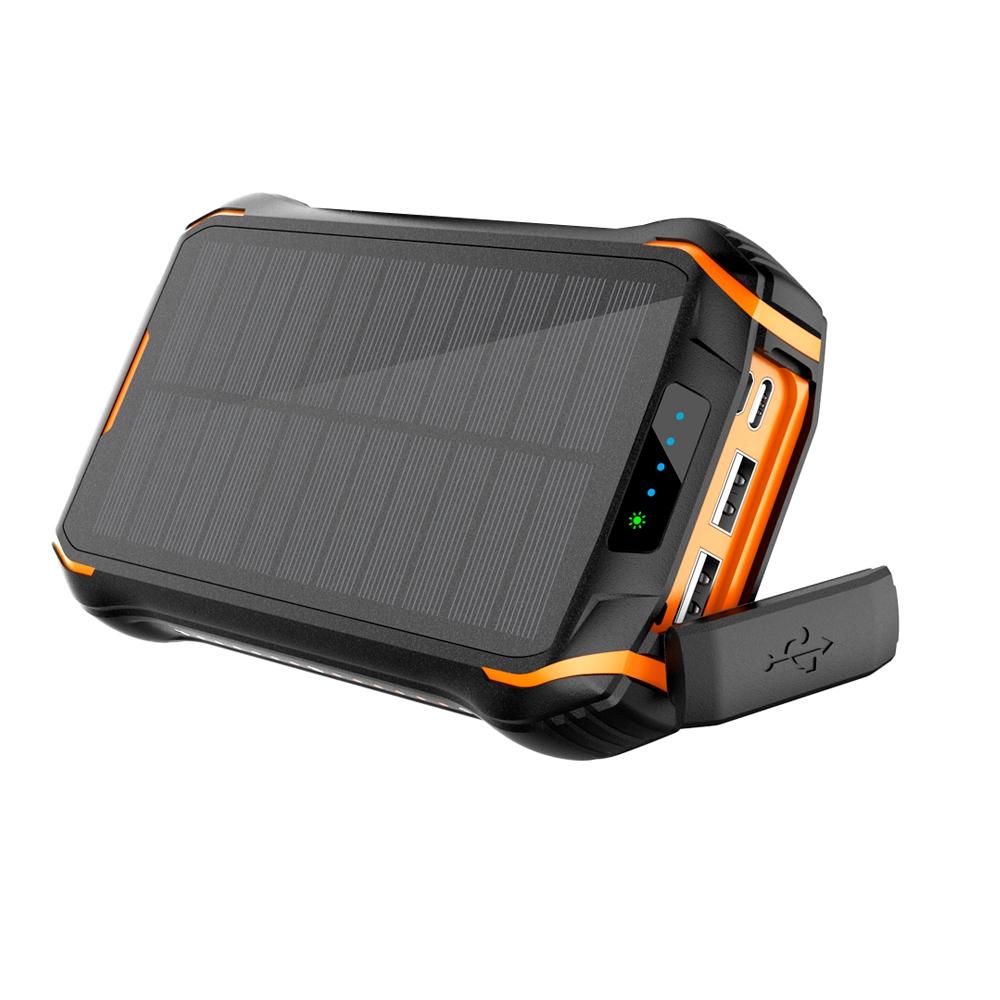
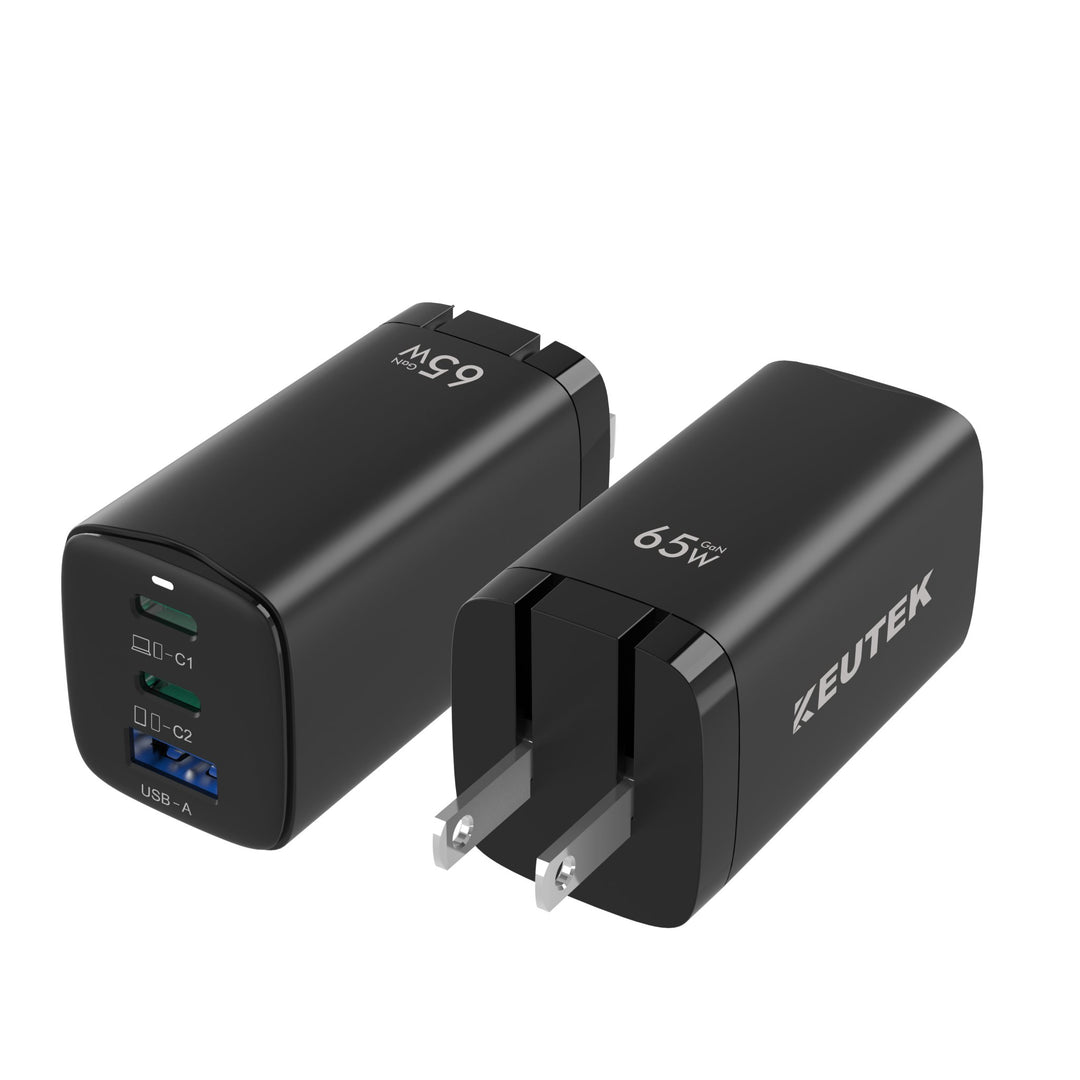
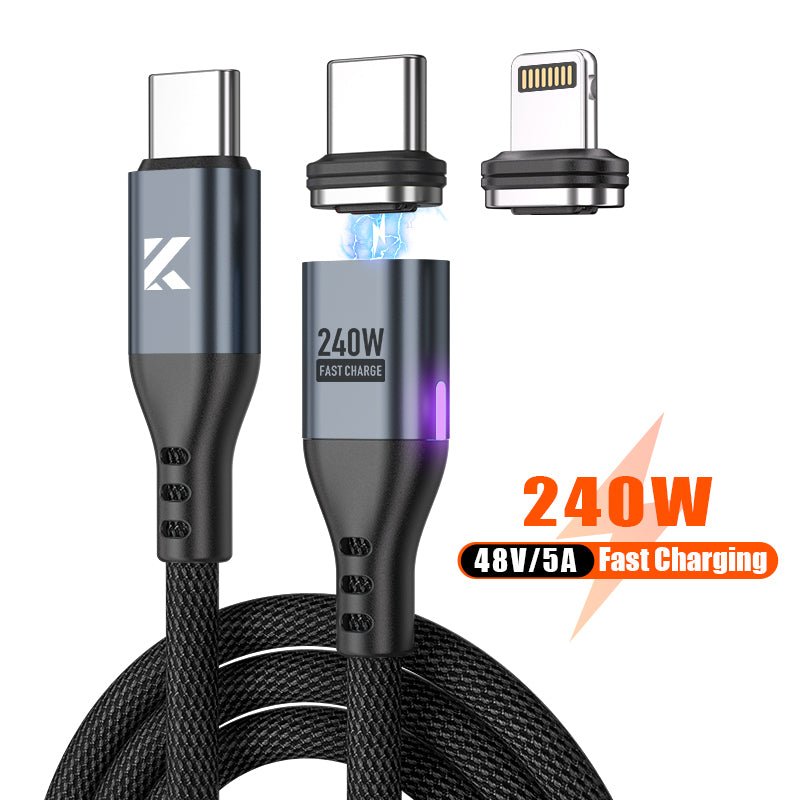
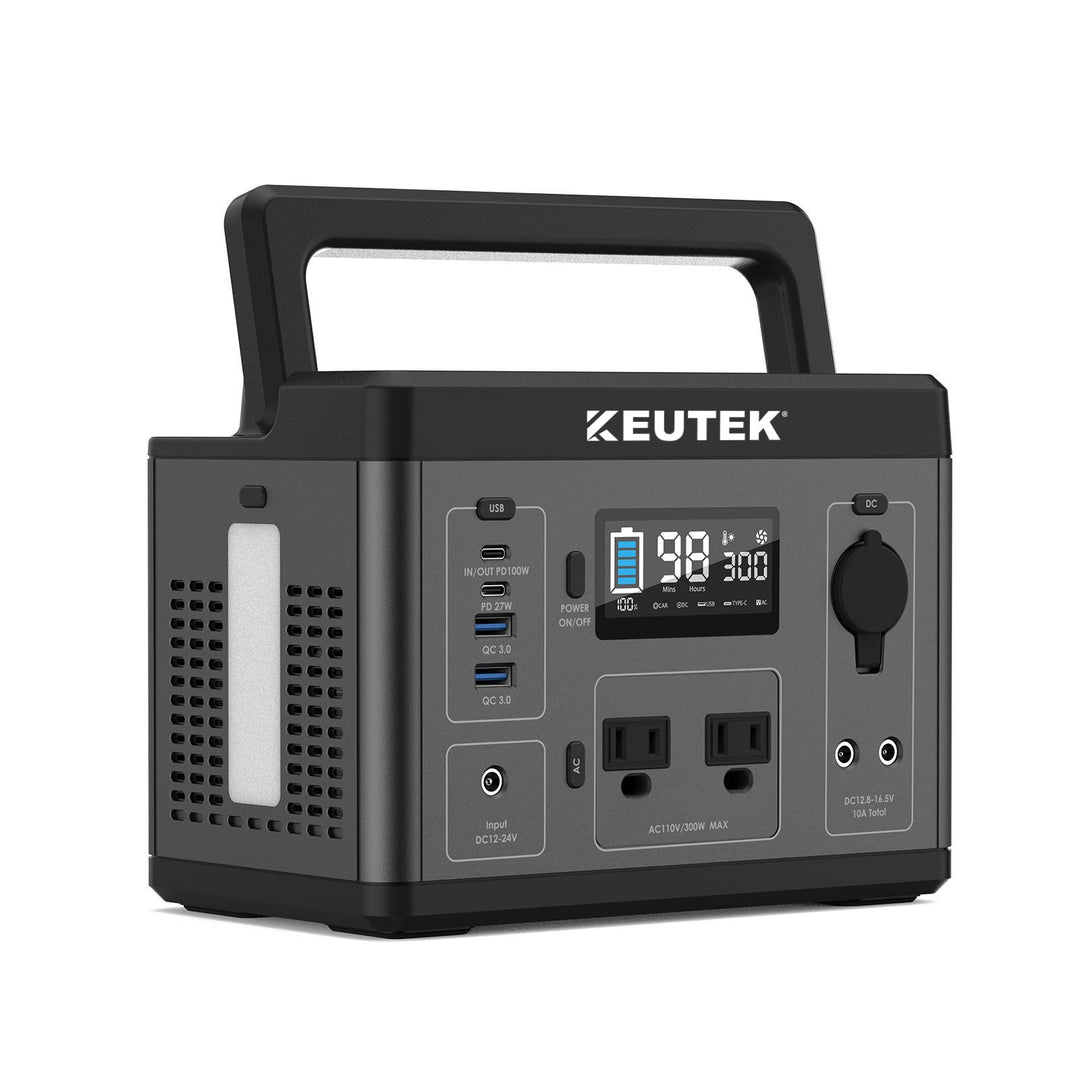
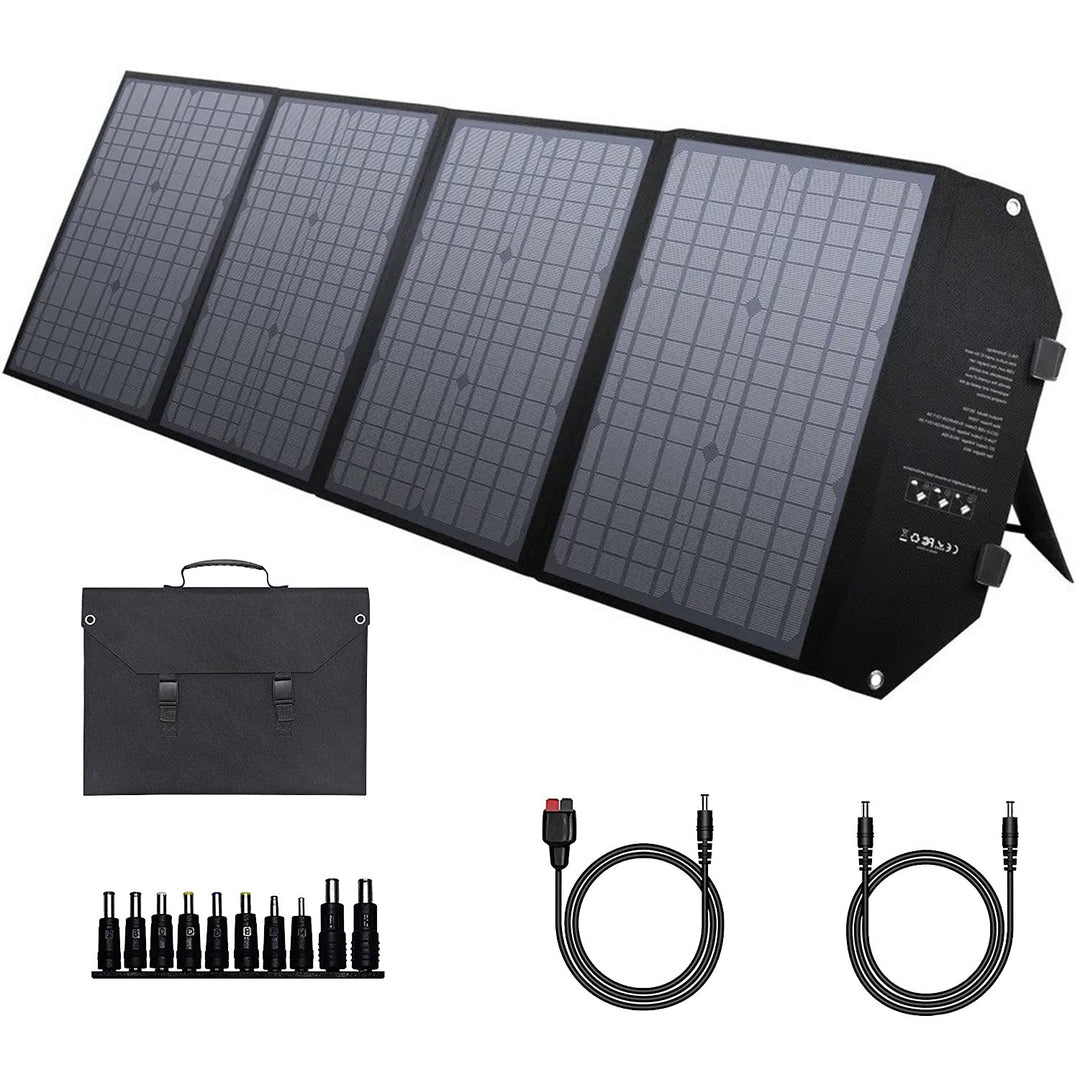
Leave a comment